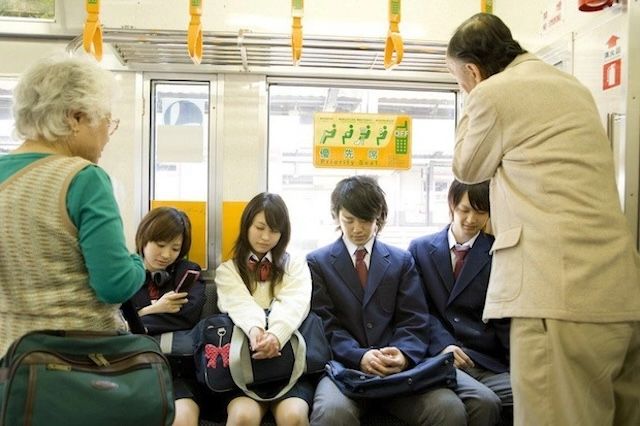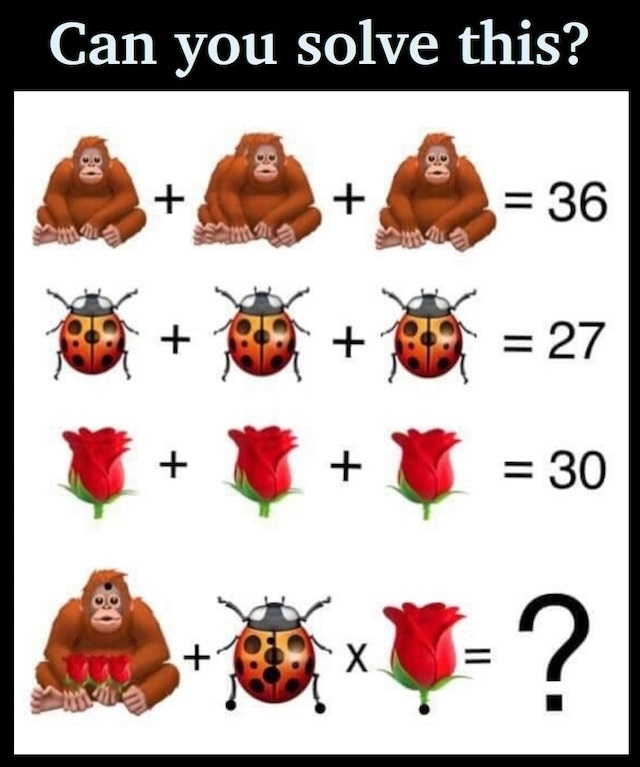The Puzzle of Empathy: What’s Really Missing from the Scene?
In the world of puzzles, some challenges stand out not because of their complexity, but because of the subtlety they demand. One such puzzle presents a seemingly ordinary public transport scene and asks you to uncover what’s missing. At first glance, the scene might appear perfectly normal. But as you dive deeper into the interactions between the passengers, you might realize something crucial is absent. This puzzle is a test of your observational skills, encouraging you to explore beyond the obvious and uncover a deeper message hidden within this simple scenario.

Common Mistakes People Make
When faced with a puzzle like this, it’s natural to focus on the most apparent elements. Perhaps you count the number of passengers, scrutinize objects surrounding them, or analyze the background looking for something out of place. These are all valid observations, but they often lead to a dead end. The trick is not in identifying what’s physically missing, but in recognizing a social or ethical absence—something subtle, but equally significant.
By focusing on the obvious, we might miss what the puzzle is truly about. We often overlook the behaviors and values displayed in such a scenario, which is where the real challenge lies.

What’s the Puzzle Really About?
The image at the center of this puzzle depicts a group of passengers on public transportation. There’s an elderly woman with a cane, a pregnant woman standing in the middle, and several younger passengers either seated or standing, engrossed in their own worlds. What you might notice first are the elderly and pregnant women’s apparent discomforts—yet, what’s truly significant is what’s missing from the image: chivalry.
Despite the evident need for seating, no one offers their seat to the elderly woman or the pregnant woman. The younger passengers remain absorbed in their own activities—whether they are on their phones, listening to music, or simply lost in thought. The absence of any consideration or empathy for those in need is the real missing piece of the puzzle.
Breaking Down the Puzzle Step-by-Step
First Impressions
Your first glance at the scene shows a mix of passengers: some are sitting while others are standing. The elderly woman and the pregnant woman are noticeable because of their discomfort. The elderly woman is leaning heavily on her cane, and the pregnant woman appears unsteady on her feet.
Observing Behavior
The younger passengers, however, remain seated, seemingly engrossed in their personal activities. They don’t seem to notice the discomfort of the elderly or pregnant woman. There is a stark contrast between the need for help and the lack of action from those around them.
What’s Missing?
The critical detail that stands out is the lack of empathy and courtesy. In a society where people often find themselves focused on their own experiences, we forget to consider the needs of others. In this case, the simple act of offering a seat to those who need it is completely absent.

The Deeper Message: A Lesson in Empathy
This puzzle goes beyond testing your ability to observe; it offers a poignant lesson in empathy. Empathy is a fundamental aspect of human connection, and in our modern world, it’s easy to become so absorbed in our own lives that we forget to notice the needs of those around us. This puzzle reminds us of the importance of small acts of kindness—such as offering a seat on public transportation—which can make a world of difference.
While puzzles often engage us through logic and reasoning, this one also challenges us to think more deeply about our social responsibilities and the values we uphold in our daily interactions. The missing chivalry highlights a broader societal issue—one where kindness and empathy are sometimes overlooked in favor of individual pursuits.

Why This Puzzle Matters More Than You Think
While the puzzle might seem simple at first, it carries a profound lesson. It encourages us to look beyond the physical world and reflect on the social dynamics around us. It calls for greater awareness and mindfulness of the moral responsibilities we hold, not just in solving puzzles, but in how we interact with others in real life.
In a society where technology and individualism are often at the forefront, it’s essential to remember the values that bind us together: respect, kindness, and consideration for others. The next time you’re in a similar situation, remember this puzzle. It’s a gentle reminder to put down your phone, notice those around you, and extend a hand when needed. These small moments of kindness can have a profound impact, both for the people we help and for ourselves.

Conclusion
The puzzle presented here is a valuable reminder of the importance of empathy in our everyday interactions. It challenges us to be more observant of the social dynamics around us, encouraging us to practice mindfulness and kindness. In a world where distractions abound, small acts of consideration—like offering your seat to someone in need—can make a lasting impact.
Next time you’re in a similar situation, remember the lesson from this puzzle: the simple act of being aware of others’ needs can transform both your own experience and the lives of those around you. Let this puzzle be a gentle nudge toward greater compassion and empathy in all areas of life.
Share this content:









Post Comment